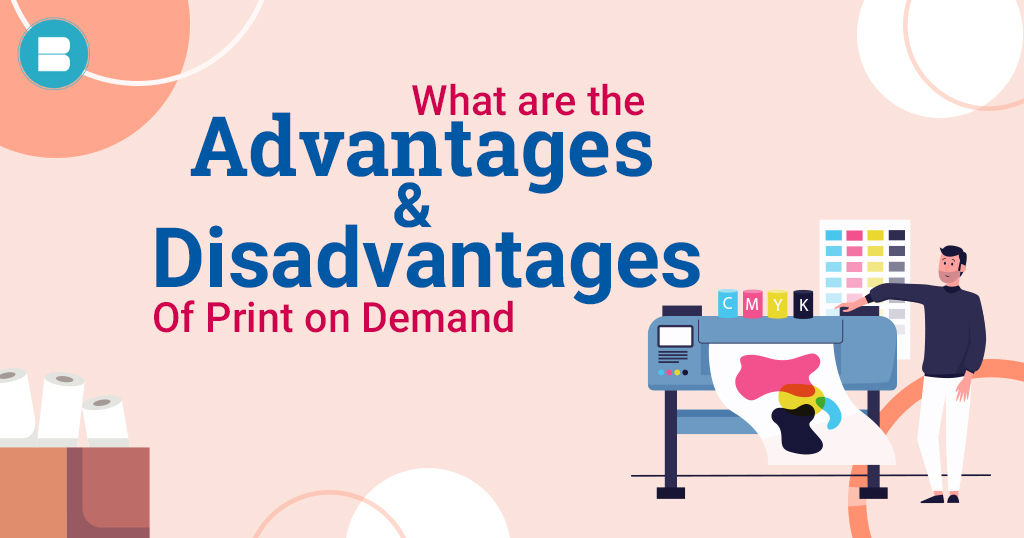In today’s digital age, the landscape of printing and publishing has undergone a significant transformation. One of the notable innovations in this realm is print-on-demand (POD). This technology has revolutionized the way books, merchandise, and other printed materials are produced and distributed.
Read: A Complete Guide on How to Self Publish a Book in the UK?
In this blog post, we’ll delve into the advantages and disadvantages of print on demand, exploring how it has shaped the world of publishing and printing.
What is print on demand (POD)?
Print on Demand (POD) is a digital printing method that enables the production of printed goods in small quantities, often as they are required. In contrast to traditional printing technologies, which need massive print runs, POD allows for the production of single copies or small quantities of printed materials. This technology has found use in a variety of businesses, including book publishing, personalised products, and marketing materials
Benefits of Print on Demand
- Cost Efficiency: One of the key benefits of print on demand is its low cost, particularly for small-scale or independent publishers. Traditional printing technologies sometimes need a hefty initial investment in huge print runs. POD, on the other hand, eliminates the requirement for mass printing, lowering both the upfront expenses and the danger of unsold inventory.
- Versatility: POD provides unrivalled versatility in terms of customization and edition control. Publishers and producers may simply modify their products, update content, and generate new versions without incurring significant costs. This flexibility is especially useful for authors and artists who are experimenting with new concepts or specialised markets.
- Less waste: Traditional printing processes can result in significant waste owing to the requirement of printing in big quantities to make the process cost-effective. POD, on the other hand, reduces waste by manufacturing only the precise number of copies required. This environmentally efficient strategy matches with sustainability aims and decreases publishing’s environmental imprint.
- Accessibility: Print on Demand democratises publishing by opening it up to a wider variety of artists. It enables self-publishing writers and independent artists to advertise their creations without the need for large resources or industry ties. This accessibility has enabled many people to contribute their own views and ideas.
- Global Distribution: POD uses digital technologies to make global distribution possible. Printed documents may be generated and distributed to consumers all over the world on demand, removing the need for expensive and logistically challenging international print runs. This facilitates the reach of businesses and innovators to a worldwide audience.
You may also read: Author Podcasts vs Writing Workshops: Which is Better for You?
The Disadvantages of Print on Demand
- Higher per-unit costs:
While POD offers inventory management cost advantages, it has higher per-unit manufacturing costs as compared to traditional offset printing for big print runs. This can have an impact on the profit margins of companies that rely significantly on POD, particularly when selling lower-priced items. - Limited Materials and Finishing Options:
When compared to traditional printing processes, print-on-demand services may have limits in terms of accessible materials, paper quality, and finishing options. This can have an impact on the overall aesthetics and perceived value of printed products, especially luxury or speciality ones. - Longer Production Times:
POD, despite its efficiency, may have longer production times for individual orders compared to traditional offset printing, which can produce large quantities rapidly. This can be a drawback for businesses with tight delivery deadlines or high-demand periods. - Quality Variability:
The quality of POD products can vary depending on the equipment and technology used by different service providers. While many POD services maintain high standards, there is a risk of inconsistency in print quality, which may not meet the expectations of some customers.
Is print-on-demand profitable?
Print-on-demand profitability is determined by various factors, including the type of product, price strategy, and target market. POD provides a low-cost option for many independent producers, writers, and small enterprises to access the market and create cash with no financial risk. Profitability, on the other hand, is dependent on successful marketing, product quality, and competitive pricing.
Print on Demand has transformed the printing and publishing environment by providing various advantages such as cost effectiveness, flexibility, decreased waste, accessibility, and worldwide distribution. These benefits make it a tempting option for independent producers, authors, and enterprises trying to advertise their products.
Read: Top 5 AI-Powered Content Generator for Quick and Quality Writing.
However, there are several drawbacks to print on demand, such as increased per-unit prices, fewer material selections, longer manufacturing times, and quality unpredictability. Individuals and organisations should carefully assess these advantages and downsides against their personal requirements and goals when deciding whether to use print-on-demand services.
Finally, Print on Demand is a game changer in the printing industry, providing a dynamic alternative to traditional techniques that may empower a diverse variety of artists and businesses.
















